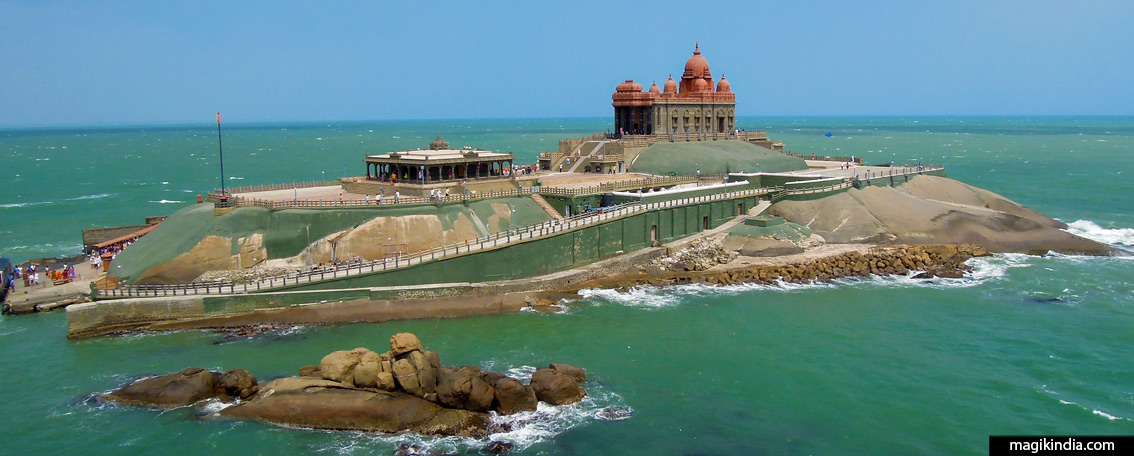
Kanyakumari
Kanyakumari, formerly called Cape Comorin, it the southern tip of India where the Arabian Sea meets the Indian Ocean. The place is named after the goddess Devi Kanya Kumari, a form of Parvati. The town is mainly a holy place for Hindus because of its Bhagavathy Kumari temple and its connections with Swami Vivekananda, Mahatma Gandhi and the sage Agastyar.
Vivekananda Rock Memorial***
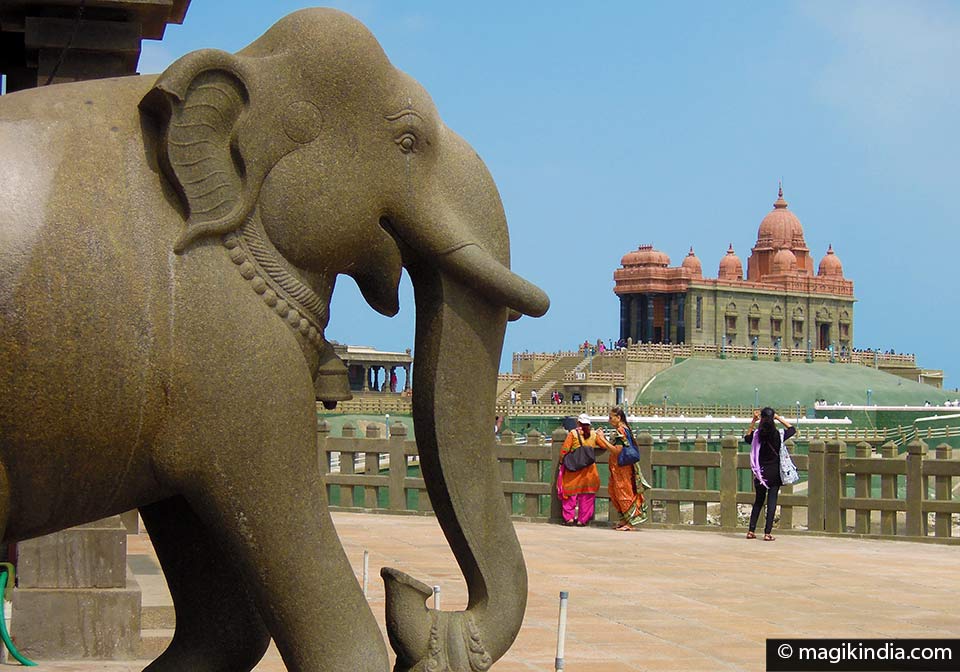
The Vivekananda memorial stands on a rock about 500m off the coast.
It can be reached by ferry across a rather rough stretch of sea. It was built in 1970 in honour of Swami Vivekananda’s visit to Shripada Parai in 1892.
The story goes that he swam to the rock and meditated there. It is said that is here that he attained enlightenment and became a great philosophical reformer.
rock memorial vivekananda website
“You have to grow from within. No one can teach you, no one can make you spiritual. There is no teacher but your own soul” Swami Vivekananda
Thiruvalluvar Statue **

Next to the Vivekananda memorial, on a second rock, is a huge stone statue of the Tamul poet Thiruvalluvar, author of the Thirukkural, a work in rhyming couplets setting out various teachings on how to live a harmonious life. It can be reached by ferry from the Vivekananda memorial.
The statue was inaugurated on 1 January 2000. Twenty-nine metres tall, it stands on a 12m plinth on which the Thirukkural‘s 38 chapters on virtue are carved. The combined height of plinth and statue is 133ft (40.5m), representing the 133 chapters of the Thirukkural.
Bhagavathy Kumari Temple**
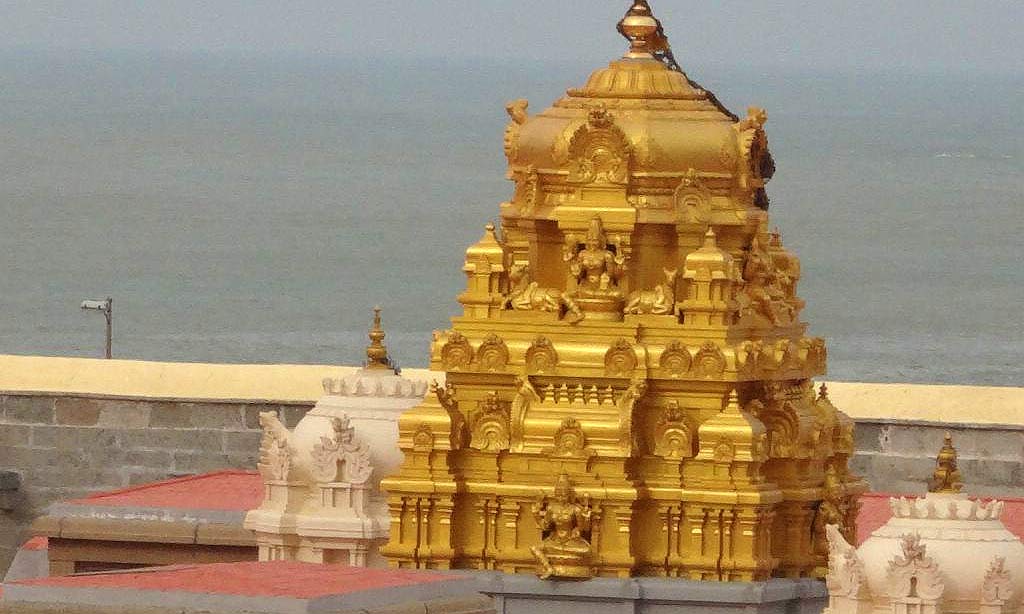 Bhagavathy Devi, also known as Devi Kanya Kumari, is the goddess Durga in the form of an adolescent girl.
Bhagavathy Devi, also known as Devi Kanya Kumari, is the goddess Durga in the form of an adolescent girl.
She is the goddess of sannyas (renunciation) and penitence. The Goddess is believed to be the one who removes the rigidity of our mind,
This highly revered temple is also one of the 51 Shakti Peethas; it is said that the spine of the goddess Sati’s body fell here.
Gandhi Memorial*
Near the Kumari Amman temple stands a memorial to Mahatma Gandhi, who visited Kanyakumari in 1925 and 1937.
Some of Gandhi’s ashes were kept here before being scattered at sea.
The memorial is built in the Odisha architectural style and designed so that each year on 2 October, Mahatma’s birthday, the sun’s rays fall exactly on the spot where the funerary urn stood.
The height of the building’s centre is 79 feet, representing the age at which Mahatma died.
Thanumalayan / Suchindrum Temple (13km)***

The Thanumalayan is dedicated to the three gods of the Trimurti or Hindu trinity.
Thanu is a reference to Shiva, Mal to Vishnu and Aya to Brahma. The temple was built in the 17th century and its 40m gopuram is remarkable for the intricacy of its carvings of Hindu deities. This place is also called Suchindrum in sacred scriptures.
Legend has it that Indra, king of the Devas, came to pray at the temple to be released from a curse. Suchi comes from a Sanskrit word for “purify”. It is also said that Indra visited the temple at midnight every night to perform an Ardhajama Puja (night ritual).

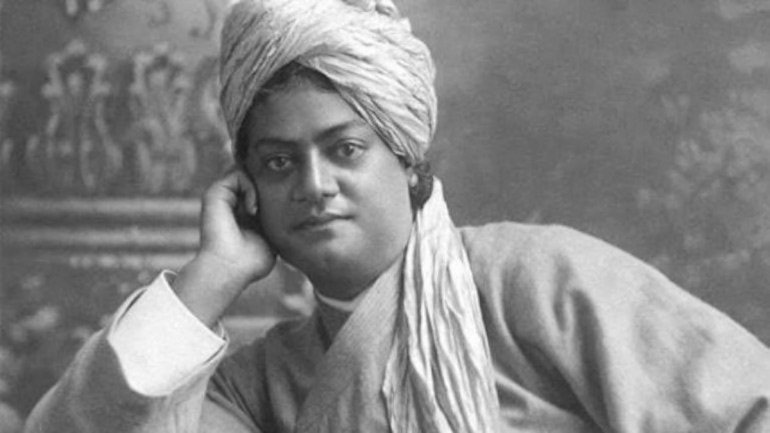

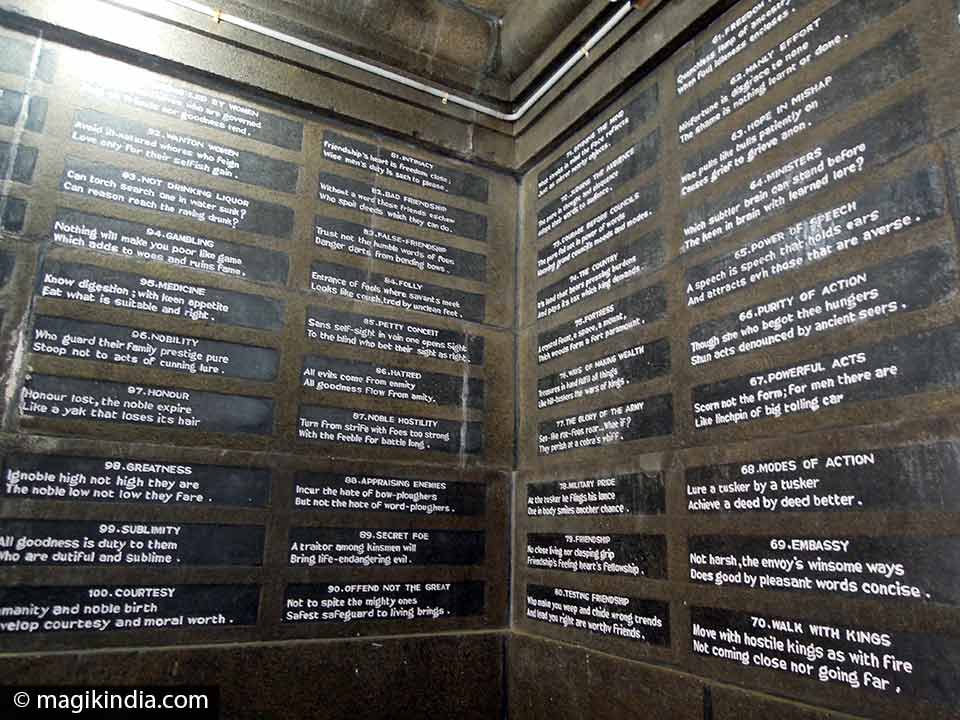
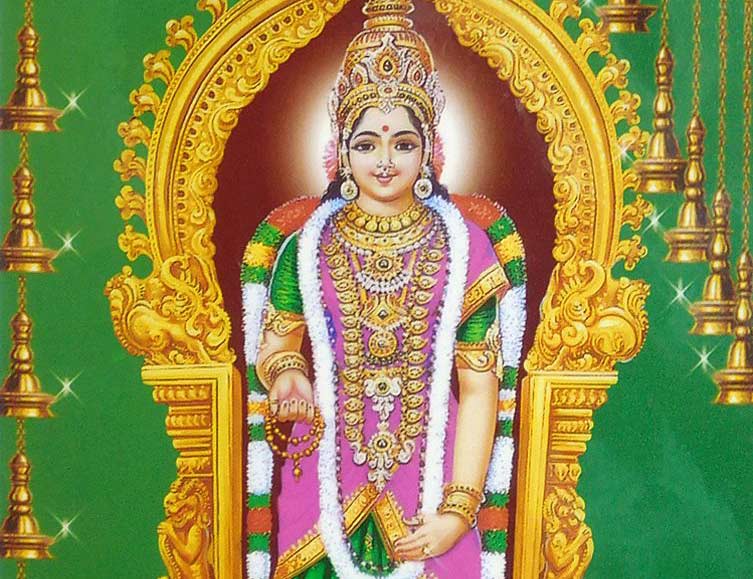





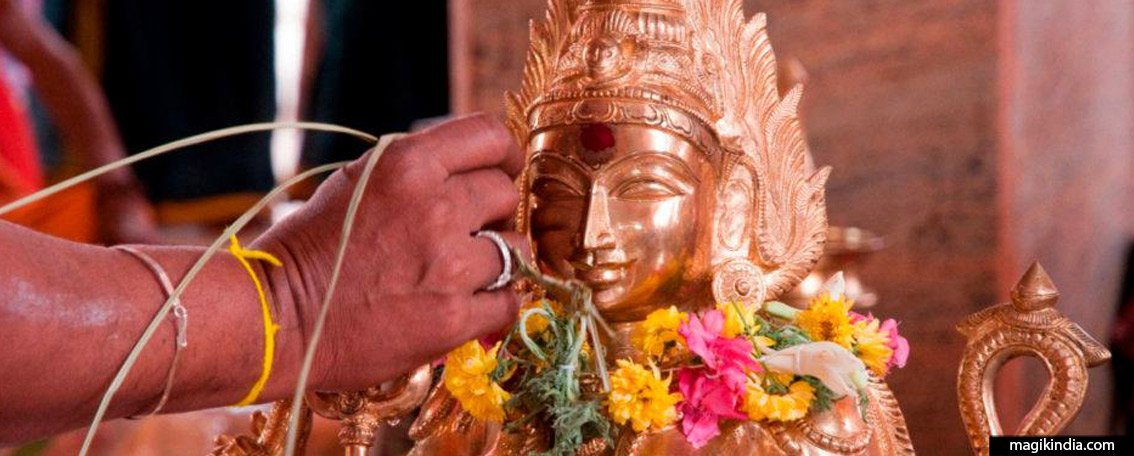
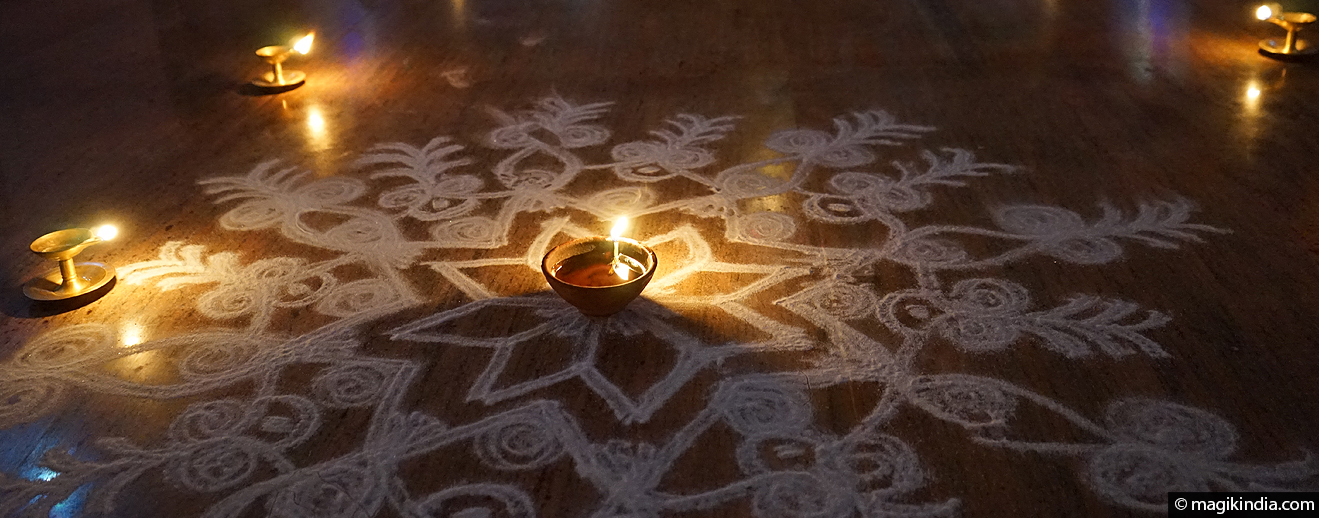
Very nice article 🙂
tks 🙂
Thanks very interesting blog!
thanks 🙂
It’s truly very complex in this busy life to listen news on TV, so I only use internet for that
reason, and obtain the latest information.